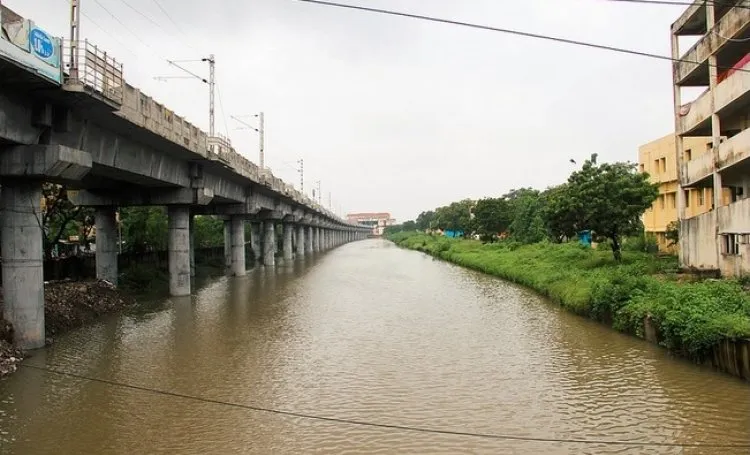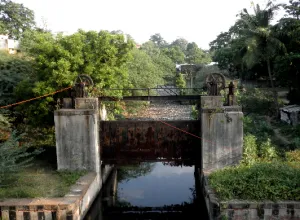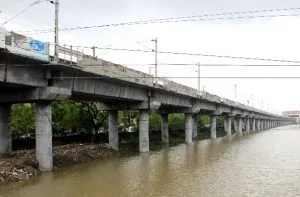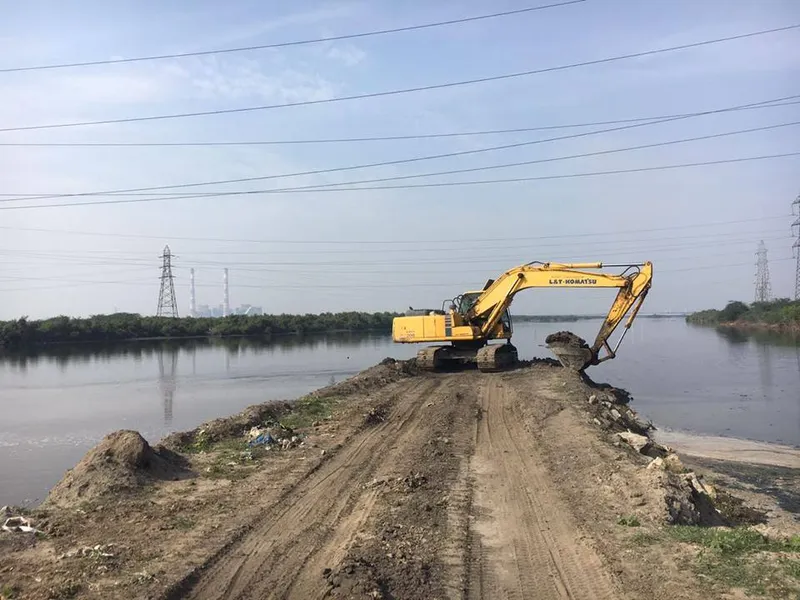The canal that protects Chennai from floods needs immediate attention
Buckingham canal in Chennai plays a crucial role in flood mitigation. It is rapidly deteriorating and needs immediate attention to avoid a repeat of last year's flood.

Long-time Kottur resident Narayanan’s earliest memories of the Buckingham canal are those of the famed salt and timber-laden wooden catamarans of the 1950s and the 60s. A namesake of the Duke of Buckingham and Chandos, the erstwhile governor of Madras, the canal was initially constructed as a brackish water-navigation channel in the early 1800s, connecting the north of Madras with Ennore. Additions were made till the end of the 18th century when the canal extended for over 100 km from the city up to Marakkanam in Villupuram district. The canal fell into disuse in the late 60s, grotesquely transforming into a sewage carrier from a thriving inland waterway.
After the Buckingham canal was declared a national waterway (NW-4) in 2008, the union government revived its plans of developing the canal between Peddaganjam in Andhra Pradesh and Ennore south as an efficient navigation channel. The 300-km stretch is expected to be dredged and excavated to ensure it is capable of transporting country crafts carrying 30 to 40 tonne cargos of coal, fertilisers, cement, and sand, apart from food grains. Navigation or otherwise, the Buckingham canal holds a very important place in the overall scheme of flood mitigation of Chennai city.
Playing a crucial role

The canal connects the three rivers—Kosasthalaiyar, Cooum, and Adyar—that cut across Chennai. Though primarily constructed as a navigation channel, managing floodwater and ensuring tidal balance were two of its more important roles.
“The Buckingham canal serves as a receptacle of flood waters from several micro and medium drains, apart from the city’s three main rivers. If not for the canal, the whole of Old Mahabalipuram Road to the south of the city would be flooded. Floodwaters do not enter the sea directly, but through the canal, and hence its presence is critical for Chennai’s survival,” says professor S. Janakarajan from the Madras Institute of Development Studies.
But the current plight of the canal is truly piteous. From its original width of over a 100 metres, the canal is constricted at several points to less than 30-or 40-metres wide. The elevated Mass Rapid Transit System (MRTS) that spans from Chennai beach in the north to Velachery in the south is almost entirely built on the canal banks. Pile foundations of the elevated tracks are laid right on or ridiculously close to the canal because of which the water flow through the channel is severely compromised.
Pollution woes

The canal cannot be seen as a separate entity as it overlaps the Ennore creek at three or four spots. The canal and the creek have almost identical ecosystems. The fish that are found in the creek are present in the canal as well.
The creek and the canal are severely polluted. Nonetheless, they support families and help sustain livelihoods. “The Ennore creek is polluted beyond imagination, but it still sustains fishing villages such as Ennorekuppam, Mugadwarakuppam, and Kattukuppam along its course. Even Irulas, who are not traditional fishermen, handpick shellfish from the Buckingham canal,” says Pooja from the Coastal Resource Centre.
Spots where the water flow of the canal is completely dead are the ones closest to the North Chennai Thermal Power Plant. The low tide exposes thick deposits of fly ash and silt, choking the canal. Ash slurry from the power plant has to cross the Buckingham canal to reach the ash pond on the other side. While ‘closed’ pipelines transport the slurry, maintenance is so poor that the ash leaks right into the canal, choking it by the day.
The canal and the creek also serve as receptacles of sludge and effluents from the various establishments that dot the Manali industrial estate. Moreover, the sewage from nearby municipalities are dumped directly into the canal. “North Chennai, all the way up from Basin Bridge to Manali, is densely settled. Given the lack of proper treatment facilities, the Buckingham canal doubles up as a sewage drain in most parts. For example, the Ernavoor and Kathivakkam municipalities dump all of their raw domestic sewage directly into the canal,” Pooja points out.
Encroachments galore
When the state is determined to override ecological concerns, an informal procedure is followed which relieves it from giving explanations and justifications. The waterbody is gradually neglected, badly maintained, and allowed to die a slow death that no one objects to putting such an eyesore to better use. Case in point is Chennai’s Mass Rapid Transit System (MRTS) constructed right on the Buckingham canal. “People would rise up in protest if there’s a plan to construct overbridges and elevated railway tracks on pristine rivers. But the track was built on a sewage channel so, who cares? This is how public opinion is shaped and this is exactly what happened to the canal here,” rues Pooja.
The Kamaraj Port, for its part, has eaten into the canal with its huge parking yards right on its banks. Though the port authorities maintain that the yard is not an encroachment, it certainly is an obstruction to the water flow during the monsoon when the volume increases.
For transportation to be viable, the considered stretch of the waterway needs to be uninterrupted from point A to B. While parts of the canal can certainly be restored, the lack of continuity greatly affects its prospect as a vital navigation channel. The decay is so great that the detailed report of the Buckingham canal restoration project has declared urban stretches as beyond repair. “If you truly want the canal’s integrity restored within Chennai city, you must be willing to demolish the entire MRTS stretch right up to Velacherry. Now which politician or bureaucrat is ready to sign that off,” questions Pooja.
Multiple shock absorption

Though the transformation of the canal into a viable navigation channel seems far-fetched, the restoration can still play a very important role in flood mitigation. Janakarajan likens the Buckingham canal to a human kidney, flushing out flood waters from the city at times of distress. In addition, the canal also acts as a shock absorber, taking in the high intensity of tides and sea waves, preventing soil erosion along the coast.
Had the integrity of the canal been maintained—by desilting and removing encroachments—the wrath of the 2015 floods would have been greatly reduced. “Encroachments along the canal need to be removed and the canal needs to be deepened through its entire length. The original link between the brackish water lakes of Pazhaverkadu (Pulicat) in the north and the Pallikaranai marshland in the south along with the Muttukadu backwaters further south should be restored at once if the canal has to function as an effective flood carrier. The width has to be restored, there’s no two ways about it if we want to save our city from a repeat of December 2015,” remarks Janakarajan.
After multiple rounds of forwarding petitions and running online campaigns to save the waterways of North Chennai, the Coastal Resource Centre's Save Ennore Creek campaign has yielded dividends. Ahead of this year's north-east monsoon, the government has directed the Ennore thermal power station, the North Chennai thermal power station and the Kamarajar Port Trust to dredge and desilt portions of the Buckingham Canal along with the creek in the hope of preventing a rerun of Chennai's worst December in recent memory.
Disclaimer: This article, authored by Seetha Gopalakrishnan, was first published in India Water Portal.







